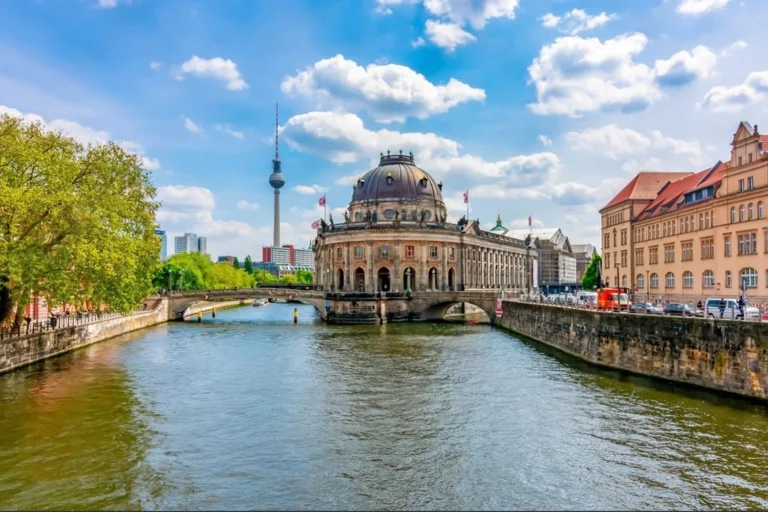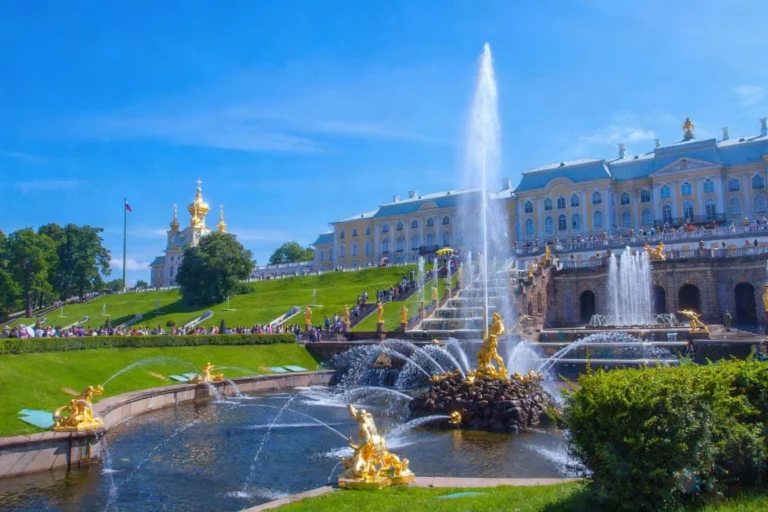Rome: 30 Curious Secrets Hidden Behind the Ruins

In Rome, walking the narrow backstreets feels like turning the pages of a dog eared journal. The morning air smells of coffee and damp stone, footsteps tap on pale cobbles, and a cool spray drifts from a hidden fountain. In quiet doorways, a quick smile passes between neighbors and a child’s chalk dust clings to the steps, the kind of small moments you notice when you slow down. Here, overlooked details reveal a quieter side, the deeper spirit that doesn’t fit on a postcard.
Where water sings from nearly every Roman corner
I didn’t expect a city to taste like mercy. In Rome, over two thousand fountains whisper at the edges of streets and piazzas, most pouring fresh, cold water you can trust. The locals make it effortless: cover the metal spout with a finger and the stream lifts into a neat little arc, a quick, cooling sip Roman style.
I remember the chill of the brass against my palm, the clean splash on my lips, the stones around me warm with sun. In that small ritual I felt folded into the city’s daily rhythm no ticket, no price, just generosity flowing, a heartbeat made of water. On a summer day, it’s the simplest grace, and somehow it makes everything else feel kinder, too.

The world’s first mall, long before neon signs
It still makes me grin that retail therapy is ancient. At Trajan’s Market in Rome, the world’s first shopping mall rose around 110 AD a honeycomb of brick and grand arches where you could pick up bread and olive oil, then run your fingers over imported silks. The air smelled faintly of olives and leather; light slipped in narrow bands across worn floors, and I could almost hear the soft hum of bargaining that once filled those corridors.
What I love is how familiar it feels. A place made for lingering and small joys, for bumping into neighbors and finding something delightful you didn’t know you needed the same instincts that tug us through malls today. Standing there, I remember feeling close to those ordinary Romans, people who squeezed sweetness from everyday life between the clang of history’s bigger moments. Some things don’t change, and thank goodness they don’t.
Rome lets its cats keep the homes they're born in.
I still smile at the memory of a ginger cat folded into a sun warmed crease of stone while traffic murmured beyond the arches. Someone told me there’s an actual law: the strays can stay exactly where they entered the world no eviction notices, no hurry. Suddenly the ruins felt less like leftovers and more like a lived in house with soft paws in the corners.
It’s a bizarre kindness that makes sense the longer you linger. Cats doze in the amphitheater’s shadow as if they were tiny emperors on permanent recess, and a chorus of purrs threads through weeds and marble like a low hymn. In Rome, the past isn’t roped off; it just keeps living alongside us, and somehow the cats make that truth easy to see.
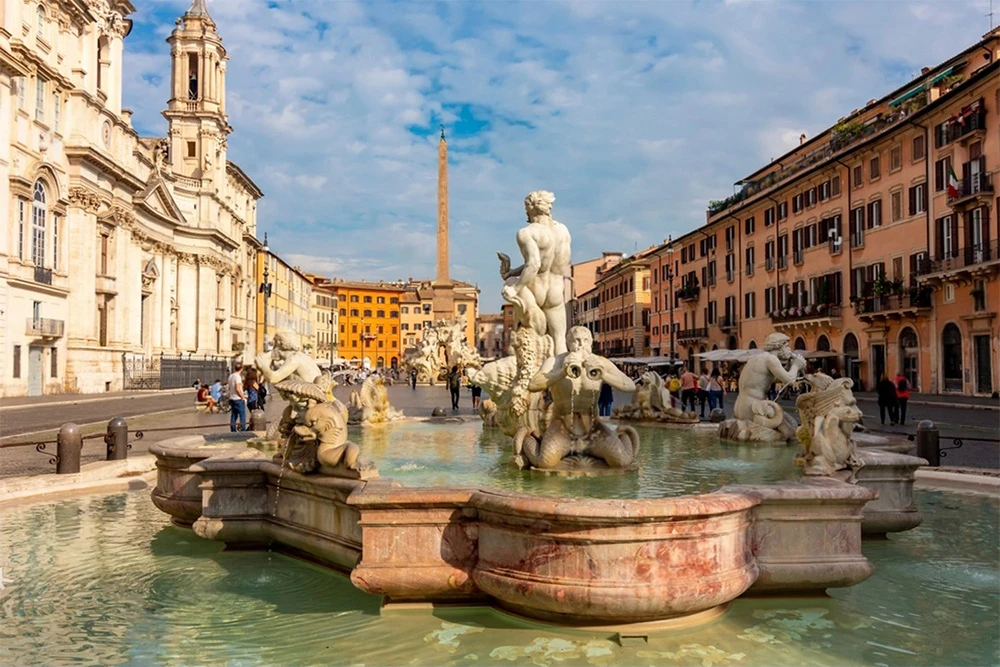
SPQR hiding in everyday iron and lamplight
I love how pride hides in plain sight. SPQR shows up on drain covers warm from the sun and lamp posts humming at dusk, repeating until it feels like a quiet heartbeat underfoot. Rain darkens the iron and the letters catch a soft gleam. The more you notice them, the more connected the place feels.
SPQR stands for The Senate and the People of Rome, and there’s something tender about those words living on humble metal. Not a museum inscription, just a daily reminder that authority and ordinary lives share the same sidewalks. It’s surprising and beautiful, this endurance like a small handshake between past and present you keep meeting on the way to coffee. It makes me feel the city isn’t just history to admire, but a community held with quiet pride.
https://en.wikipedia.org/wiki/Rome
The biggest church, born from a timeless Roman dome
It still makes me smile how scale and humility can live together. St. Peter’s Basilica may be the world’s largest church, yet its great dome owes its curve to the Pantheon. Inside, the air smells of incense and cool marble, and a gentle hush settles beneath that wide, steady arc.
The older temple holds a quiet distinction of its own: the Pantheon still has the world’s largest unreinforced concrete dome, almost two thousand years on. When sun slips through the oculus, it lays a bright coin of day on the floor, and you sense a palm holding the sky above you. In Rome, it feels honest ambition tempered by gratitude, the past guiding the present.
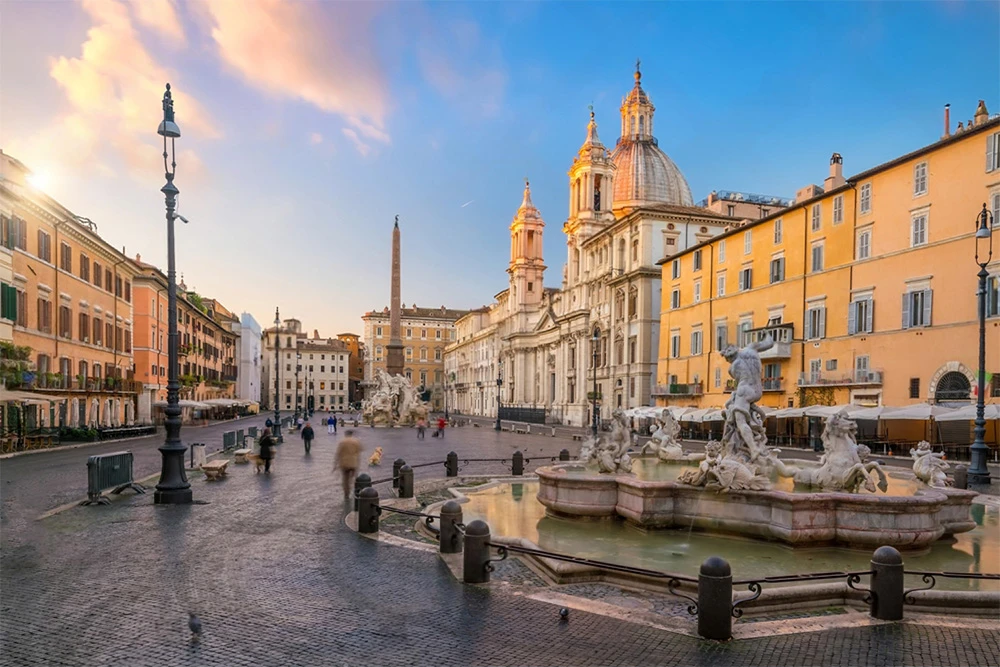
A bone chandelier meditation on life and time
I remember the cool hush near Piazza Barberini; the Capuchin Crypt settling like a soft blanket over the senses. When your eyes adjust, the bones turn into design chandeliers glinting pale, walls patterned into quiet murals, every fragment once part of a life.
More than 3,700 Capuchin friars rest here, not hidden but arranged with a care that feels almost tender. It sounds morbid, I know, yet the room carries a calm that suggests eternity isn’t a thunderclap, just a steady breath we join.
Outside, Rome is all bright chatter and scooter blur, but down here time slows enough to hear your own heart. I carried away a quiet comfort the sense that even our endings can be shaped into meaning, and that beauty sometimes chooses the strangest vessels to tell the truth.
A labyrinth of catacombs beneath crowded streets
It still gives me a hush to realize what lies under the chatter of cafes and shoe steps: an underground city breathing quietly in the dark. In Rome, it runs on and on more than 170 kilometers of cool, chalk scented corridors where the dust tastes faintly of stone. Now and then a wall breaks into color with a small fresco, and around the corner you catch scratched names and brief prayers that linger after the light moves on.
I remember feeling an unexpected warmth there, knowing these tunnels once held the tender chaos of grief and the steady courage of early Christians hiding and hoping for dawn. The place turns the whole city into a kind of palimpsest above, the clatter of scooters and fountains; below, a hush that steadies your heartbeat. It’s beautiful in a quiet way, how a city can carry both noise and solace at once, and how, under everything, stories linger until someone leans in to listen.

Ideas Thread the Air Above the Stalls
Some places speak in a low voice, like a secret. I remember standing beneath a hooded figure and feeling a small chill even in the sunshine, as if the day itself were listening. The chatter and clatter around me had a deeper hum to it, a current running just under the cobbles.
At Campo de’ Fiori, the statue of Giordano Bruno watches the morning roll in: crates of oranges shining like little suns, basil scent drifting, vendors tossing banter as easily as they weigh tomatoes. He was burned for heresy here, and somehow the square never forgot. You catch it in the quick glances, the raised eyebrows, the way voices gather, spark, and scatter again.
It’s strange and beautiful how a place of punishment grew into a market trading not just produce, but daring thoughts. Locals say the air still vibrates with restless ideas, and I believe them; it settles on your skin the way flour dust does, light but impossible to ignore. Walking away, I felt a quiet nudge toward courage, like the square was reminding me that even ordinary mornings can be a little revolutionary.
A corridor that bends distance at Palazzo Spada
I swear that hallway kept stretching the longer I stared. Pale columns stepped away in perfect rhythm, cool shade pooling on the floor, a small statue at the end pretending to be far, far off. Then someone murmured the secret: it’s barely a few meters long Borromini’s perspective trick, an artistic prank that’s been running since the 1600s in Rome.
What I loved most was how gentle the deception felt, less like being fooled and more like a wink from the Baroque. Once, while lingering there, I let the quiet settle and allowed the illusion to float over me, like a mirage you’re happy to believe for a while. In a city that mixes mischief with grandeur, that tiny corridor felt perfectly honest about its trick: wonder matters more than meters.

Where Caesar fell, and the cats now reign
I always pictured the knives flashing in the Forum, a tidy schoolbook scene. Then I learned it happened elsewhere, among sun baked ruins where buses hiss and cats lounge like small emperors. The first time that sank in, I laughed a little at how history plays hide and seek. At Largo di Torre Argentina, whiskers twitch over toppled columns, and history curls up like a cat in the sun warm, ordinary, strangely tender.
It’s such a human twist, isn’t it? A place once thick with whispers and betrayal now padded by soft paws and lazy afternoon purring. I remember thinking how the city refuses to let one story own a spot; it keeps stacking lives until the sharp edges dull. The stones feel like a stage after the curtain falls quiet, forgiving and somehow that makes the past easier to hold, as if Rome is telling us that even the heavy chapters can end in light.
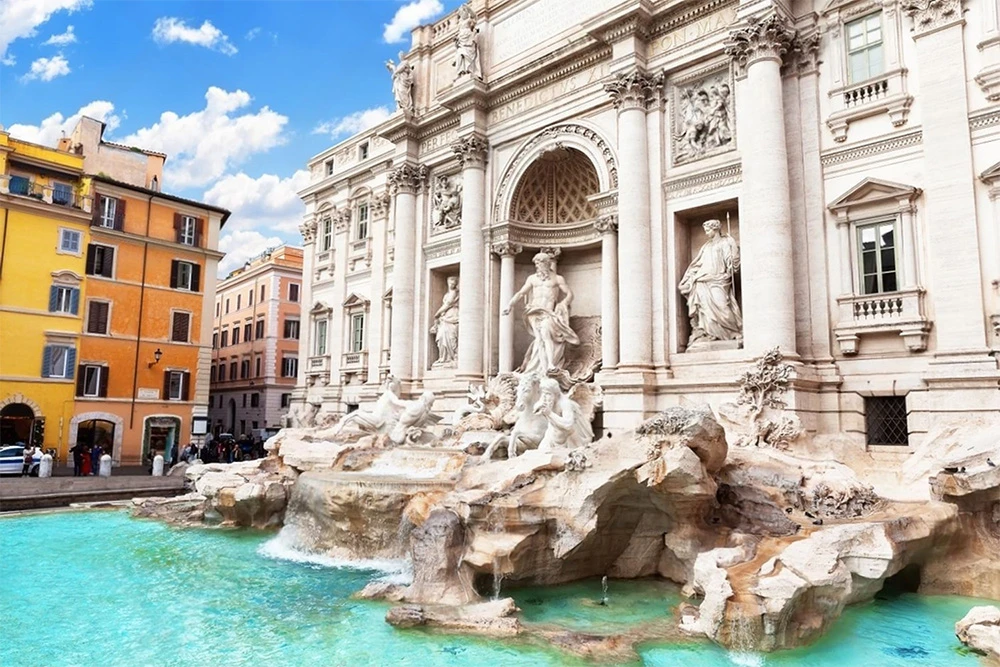
When clean laundry smelled like the street’s strange secret
I laughed softly when I first learned that the clean shirts of an empire were coaxed from something as humble as urine. The Romans prized its sharp ammonia bite, and there were people whose days were spent gathering brimming pots, clay knocking against clay, the air bright and a little brutal. It felt like an alchemy of the ordinary turning what everyone discards into the thing that made them feel new.
Now, when I pass a laundromat in Trastevere, the warm detergent haze and steady machine whirr feel almost tender by comparison. I catch myself imagining the cobblestones carrying a different perfume, a city so practical it wore thrift like a second skin, and it makes me weirdly fond of the past how human it is to chase freshness in any era, to start over with whatever we have at hand. It’s odd, a little funny, and strangely beautiful.
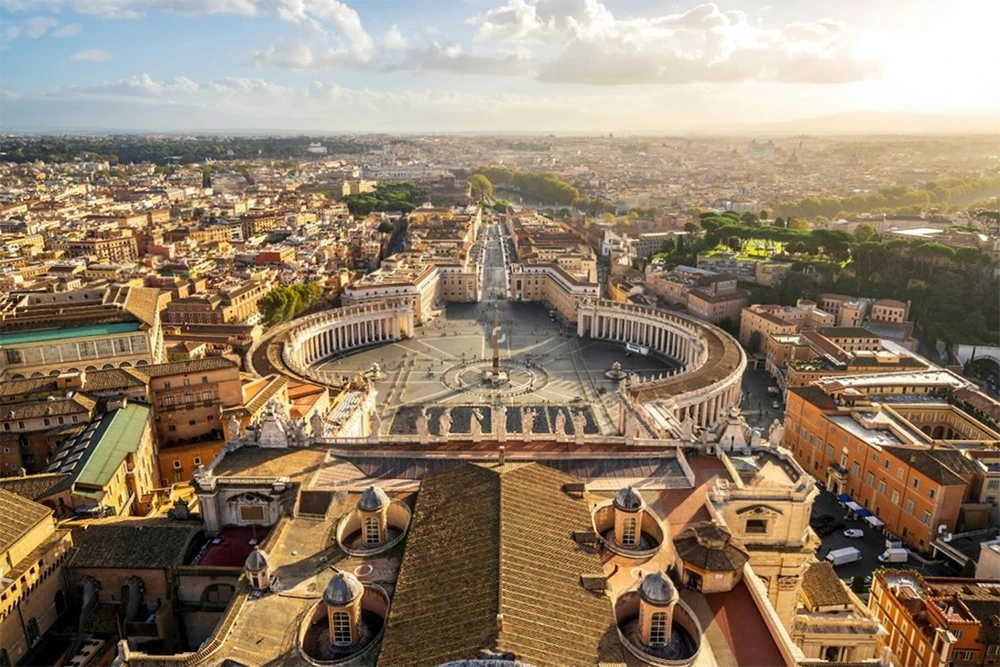
Untouchable grace and unbearable fate in ancient Rome
I still can’t get over this: in a city of iron laws, a single touch could dissolve them. The Vestal Virgins were so revered that if you brushed past one on her way to a ritual, you could claim a pardon, no questions asked. I picture morning light pooling on pale stone, a faint drift of ash in the air, and this quiet figure passing like a moving sanctuary through the noise.
But the tenderness had a hard edge. Break the vow, and the sentence was to be buried alive – the ground itself becoming the last word. Only Rome could make holiness feel like both shelter and warning at once. Their story still feels half myth, half tragedy, flickering in memory like a guarded flame; I remember standing near the Forum, struck by how grace and consequence walked the same streets there, never far apart.
A perfect dome inside a tiny Aventine keyhole
I still smile thinking about pressing my eye to a coin sized opening and finding the world suddenly edited. The cool metal, the faint scent of hedges, the hush of a quiet hill and there it was, St. Peter’s dome sitting perfectly in the center, hedges pulling back like a green curtain to reveal a stage you didn’t know you were waiting for. I remember holding my breath as if the view might flutter away if I exhaled.
Few tourists wander that far, which makes it feel like the city is sharing a private wink, a secret kept just for the patient in Rome. It’s such a small thing, but it nudged something big how wonder doesn’t always roar; sometimes it clicks into place with quiet, precise joy. In that tiny circle, everything aligned, and for a moment the city felt measured by a heartbeat rather than traffic and time, the old Roman magic alive in a blink.

The shortest river you might miss between licks
I remember the first time someone pointed out the River Tiberina and laughed that it was a river at all. Barely 250 meters, supposedly the shortest in the world, it slips along so quietly that if you blink, it’s already behind you. I tasted my pistachio gelato, and before the first drip warmed my knuckle, its end had arrived.
In Rome, where roads and stories tend to run long, this little waterway feels like a hush proof that wonder doesn’t need to be loud. It’s the pause between opera notes that makes the melody breathe; a reminder to notice the glitter on the surface, the cool under a stone bridge, the murmur of nearby conversations. Somehow a fleeting river can slow you down, and that’s the kind of magic I carry home.

Warm floors beneath those ancient winter skies
Isn’t it wild how some comforts feel timeless? On a bite cold day, I imagine the Baths of Caracalla in Rome washed with steam, the floor itself a quiet sun hidden under the tiles. The Romans had this clever thing the hypocaust that ferried hot air underfoot, so you could step from winter air into rooms that whispered warmth, like slipping your feet into warm sand. I remember grinning at the thought: ancient toes, just as grateful as ours.
What gets me is the tenderness of that engineering. It wasn’t just pipes and bricks it was an invisible kindness, a decision to make shared space soft around the edges. In those big echoing halls, warmth would have drifted up with laughter, turning a bath into a small act of mercy against the season. Somehow it makes the past feel close: not marble and marble alone, but a people who understood how good it is to be held by heat when the world outside is cold.
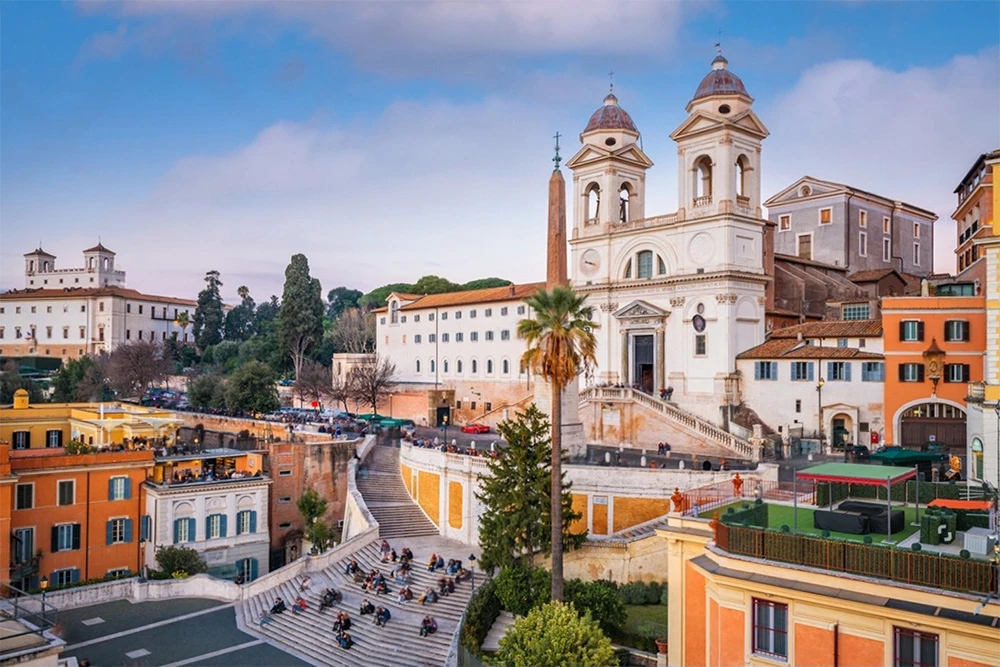
Art Nouveau daydreams in Rome’s secret Coppedè quarter
I remember grinning for no sensible reason. Overhead, a chandelier hung in the open air, throwing a little sparkle on cobblestones while whimsical arches stitched the sky together. Moorish towers stood like storybook sentries, and facades curled with wrought iron vines and mosaic, the colors catching bits of afternoon sun.
Quartiere Coppedè in Rome feels surreal, Art Nouveau colliding with fantasy in the best possible way like an architect on an espresso high decided the city needed a small, joyful detour. It’s the kind of beauty that doesn’t shout; it sidles up with odd angles and playful details until you realize you’re quietly delighted. In a place famous for solemn marble and perfect symmetry, this corner simply feels playful.
What stays with me is the hush of it, the faint drift of coffee from a nearby bar, the soft echo of footsteps under the arch. Because it’s little known, you get space to be curious again, to linger on a doorway shaped for a fairy tale and let your mind wander. I left with that happy feeling you get when a place surprises you quietly.
Ancient aqueducts still feed fountains and baths
I remember cupping my hands at a street spout, the water startlingly cold and a little mineral, as if it had kept a secret on its long walk. Here in Rome, some fountains and even a few public baths still sip from paths laid out two thousand years ago, stone veins threading under cobbles and courtyards. People once called it liquid gold from the hills, and when it hits the basin you hear why the bright, living note of something that hasn’t forgotten its source.
What gets me isn’t the engineering brag, though it’s huge; it’s the tenderness of continuity. A city that could have moved on chooses to keep quenching daily thirst and staging beauty from the same water, making survival and spectacle flow together. You feel it where kids lean in and elders pause, at the hush between splashes: a quiet assurance that the present belongs to an old, generous rhythm, still running, still generous.

Crunchy artichokes, seasoned by centuries of resilience
It’s the crunch that stays with you the petals shattering, the center tender, a breath of lemon and salt rising with the steam. The crackle of hot olive oil lingers in your ears. I remember thinking how a vegetable could feel so steady, so sure of itself.
In the Roman Ghetto, one of Europe’s oldest Jewish quarters, these fried artichokes have been loved for centuries; each one opens like a small edible sun. The flavor isn’t just richness from oil and heat; it’s the sound of families gathering after long weeks, of scarcity turned into celebration, of survival keeping its seat at the table. Each bite is like a page of history you can taste, crisp at the edges, soft at the heart, and I felt quietly strengthened, as if some of that resilience had settled into me.

Locals' secret: a church in three deep layers
I love how some places hide their heart underground. Locals in Rome point you away from the crowds to Basilica di San Clemente, where the air cools and smells faintly of wax and wet stone, and the centuries feel very close. You move from a 12th century church bright with mosaics into a 4th century church where frescoes fade at the edges, and then further down into a 1st century Mithraic temple, cramped and echoing each layer more shadowy and mysterious than the last, like peeling back the city’s memory.
Standing there, I remember the hush growing heavier with every step, as if the noise upstairs agreed to wait outside. Maybe that’s why people who live here love it: it feels personal, almost private, a quiet reminder that the present is cradled by older rooms. San Clemente shows how a place can hold time gently, one chamber over another like holding a stack of centuries in your hands, and realizing they never really left.

When Romans Turned the Tiber Into Liquid Celebration
I love the idea that a city once poured its happiness straight into the water. I picture the Tiber in Rome running the color of watered wine, a garnet ribbon slipping through dusk. It feels both wild and tender, like the kind of mischief you’d only dare when the whole town is in on the secret.
Then come the tiny boats, each carrying a candle that trembles in the night air little constellations drifting over a dark current. I imagine the scent of beeswax and grape on the breeze, the hush that settles when a crowd realizes it’s witnessing something gentle. Even the temple rooftops would catch the glow, as if the sky had stooped to meet the river for a moment.
What gets me is how playful it is, and still so reverent. Once, leaning on a river wall at evening, I tried to imagine that glow moving past my feet and felt an old kind of warmth rise up. It says something beautiful: celebration doesn’t have to shout; sometimes it just flickers across the water, and everyone understands.
Ancient stones beneath everyday steps
The street caught my attention at ankle height. After a quick rain, the cobbles gleamed, and a slim crack in the fresh repair gave away what lay below broad, time smoothed blocks, quiet and stubborn under the patchwork. A scooter hummed past, the air warm with espresso and damp stone, and it felt like the city was a palimpsest under my shoes, layers of handwriting showing through the latest line.
It made me move softer, as if each step might stir up a small memory. In Rome, wonder isn’t only in the arches and ruins; it lives in the ordinary road that carries groceries, gossip, and the old empire at the same time. I remember thinking how steady it all felt, a quiet heartbeat in the pavement, reminding me that this place doesn’t keep history behind glass it lets it travel with you, right underfoot.
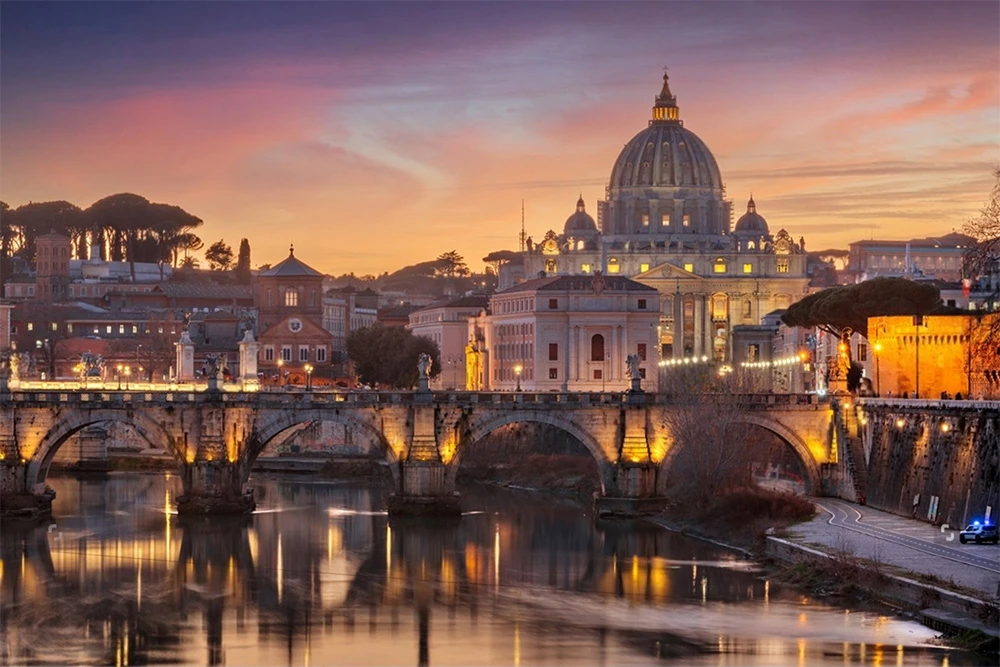
Cycling the queen of roads through time
There’s a moment when the city noise fades and the world goes gentle. On the Appian Way, sun warms the old basalt until it smells faintly of rain and dust, and cypress shadows slip across your wheels. Just beyond Rome, fields open up, birdsong threads the air, and the breeze carries the calm of something long rooted.
I remember pedaling past tombs that keep their own quiet, villas softened by ivy, and thinking how tender it is that a 2,000-year old highway still welcomes everyday legs. Each meter feels like paging through a stone bound diary: generals and traders, pilgrims and lovers, all layered beneath a very present afternoon. Time doesn’t vanish here; it loosens, so you can feel its weight without being crushed by it.
That’s the surprise and the comfort the original queen of roads is not a museum rope but a way to breathe, the city exhaling into countryside in a single, steady line. You glide for miles and come away a little dusty, a little sun dazed, carrying an easy kind of awe you can’t quite explain, only feel.
A golden courtyard honoring women, hidden in plain sight
One moment it’s car horns and chatter; the next, a hush settles and the walls seem to glow. Just off Via del Corso, the Galleria Sciarra unfolds in buttery light, its Art Nouveau murals gilded like sunlight poured into paint, praising the quiet virtues of women. It feels almost secret, a delicate chorus above the echo of footsteps, somehow overlooked while the crowds rush by.
What stays with me is the tenderness of it all this city of emperors making room for patience, strength, and grace. In Rome, of all places, a small courtyard chooses to honor the everyday heroines who hold lives together, and I remember thinking of teachers, aunties, friends who steady the world without fanfare. There’s the faint drift of espresso from the street, a soft coolness under the arcades, and the sense of a pocket of warm light tucked into a coat of stone, reminding you that grandeur can also be gentle.
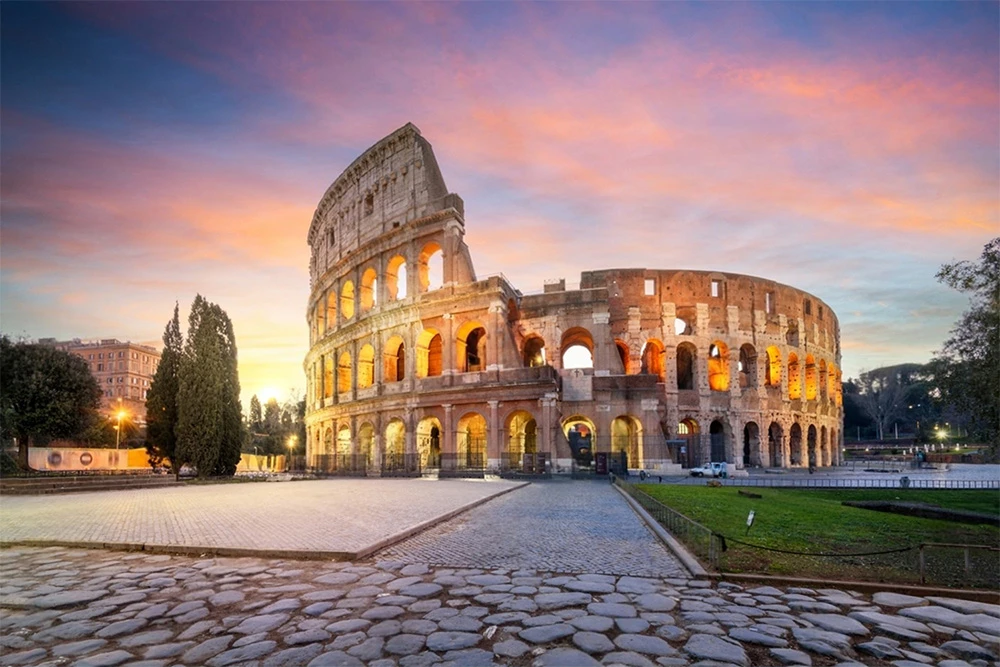
The statues that let a city speak its mind
It still makes me smile that two old slabs of stone have the sharpest tongues in town. Not the politicians, not the pundits the statues. At dusk, when the air smells like espresso and exhaust, you can almost feel a rustle in the air, like paper slipping under fingertips, laughter tucked somewhere inside the traffic’s hum.
They call them the talking statues Pasquino, battered and brave, and Marforio, serene as if water once taught him patience. In Rome, people have been pinning anonymous quips and stinging verses to them for centuries, roasting the powerful and poking at scandals when the news feels too heavy to hold. It’s like a neighborhood bulletin board with teeth, and somehow the stone makes the truth feel safe enough to say.
I remember reading a scrap where the ink had bled from the night’s damp and grinning at its sly honesty. There’s tenderness in that mischief, a whispered chorus from stone that says: we’re watching, we care, do better. Maybe that’s why I love those corners because here, humor isn’t just a joke; it’s a civic duty and a small, steady kind of hope.
From Mosquito Marsh to an Empire’s Beating Heart
I always laugh a little at how many secrets a famous place can hide. The Roman Forum was once a mosquito haunted marsh, a soft, sour basin where the ground grabbed at ankles and the air buzzed in a high, whining note. Under today’s sun, the stones are warm and steady, and you’d swear it had always been this way.
It took centuries of drainage, engineering, and sheer will to turn that mud into meaning, as if a city wrung water from its sandals until the earth agreed to hold a stage. I remember hearing that and feeling a quiet awe at the patience behind power, the way practical work becomes sacred over time. Laws, gossip, dreams everything gathered here because someone kept insisting on dry ground.
Maybe that’s why this place still feels hopeful to me: it went from problem to promise. I like how it reminds me that greatness is built, not bestowed, and that the grandest plazas begin with muddy hands. I carry that thought away, a reminder that our own messes can be shaped into a commons.
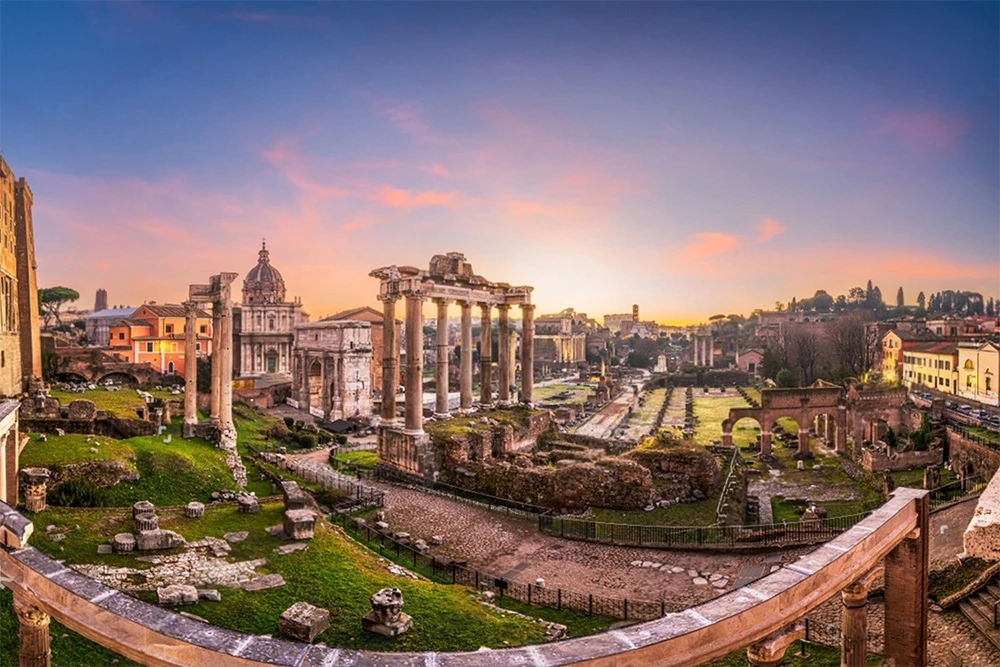
Ancient fast food simmered on busy street corners
I love that fast food didn’t start under neon signs. The Romans had thermopolia tucked along the streets stone counters with sun warmed rims, ladling out hot stew and a splash of wine to anyone who needed quick comfort. It wasn’t fancy, just the everyday kindness of a hot meal waiting at the corner.
In Pompeii, those counters are still there, their jar holes like quiet mouths, smoothed by a thousand elbows and lunchtime stories. I remember imagining the curl of steam, the tang of red wine in clay cups, and the hum of voices workers, neighbors, travelers pausing for something warm and honest before heading back into the day.
What gets me is how familiar it feels. The craving for a quick bowl, the gossip traded in line, the small mercy of food that meets you where you are none of that is new. Those thermopolia were a neighborhood heartbeat, and even in ruins, the stones feel like warm pockets of time reminding you that simple pleasures have always carried people through.
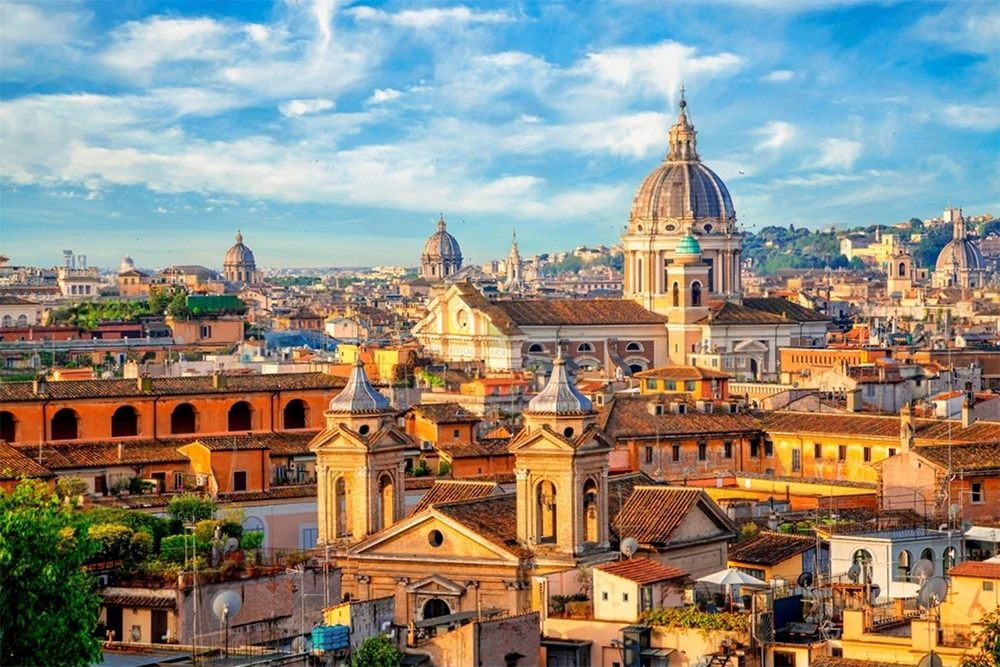
Beneath Trevi’s sparkle, an unseen city waits.
I remember the hush beneath the street, like slipping inside the fountain’s heartbeat. Down in the Vicus Caprarius – the City of Water – the air turns cool and mineral, and drip by patient drip, water taps the stone in the dim. A little underground museum stretches out in brick rooms from an ancient apartment block, and beside them the old cisterns still hold a pale shimmer. It’s wild to think that just above, coins clatter into the basin while most people never know what rests beneath their footsteps.
What moved me wasn’t the drama, but the ordinary tenderness of it all: walls made for jars, thresholds worn by everyday lives, a simple neighborhood preserved by chance. The water is the link between then and now, and it makes the whole place feel closer, almost familiar. It’s one of those corners of Rome that makes you quieter, a small pocket stitched beneath the clamor where the past feels close.
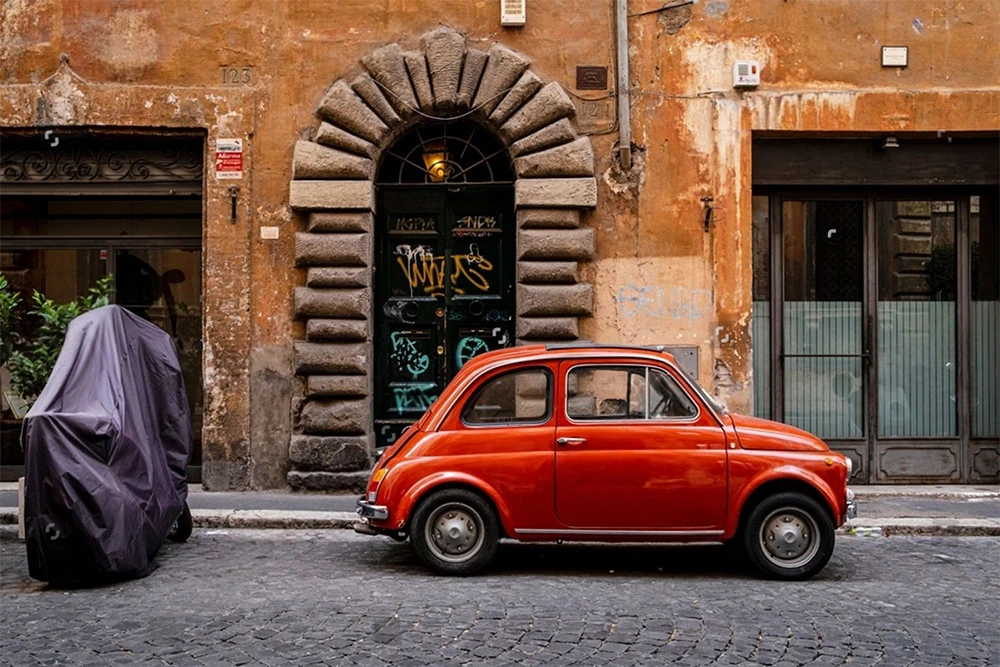
Two thousand year old doors still welcome everyday footsteps inside
I still get a little shiver when a door outlives empires and still remembers names. At the Pantheon in Rome, those bronze leaves have been opening for more than two thousand years, their hinges holding time steady like a heartbeat. The metal is cool and faintly sweet, like sun warmed coins, and the air beyond carries a hush that feels older than the crowd. I remember thinking how ordinary it all seemed kids chattering, a stroller squeaking while the past simply stood there, patient and wide.
They’re among the only ancient Roman doors still working every day, and that’s the wonder: a piece of the past doing the most ordinary job. It makes history feel close enough to touch, not locked behind glass. I left with a calm kind of joy, the simple thought that the past and the present can stand side by side without any ceremony.
La Sapienza, an old soul with a young pulse
I still get a small shock that it began in 1303, because the air around it feels brand-new. Mornings taste like espresso and chalk dust, chatter tumbling out of courtyards while tram bells blink the day awake in Rome. Once, passing the gates, I caught the smell of basil from a student garden and thought how funny it is that a university can scent a whole neighborhood with hope.
For Europe’s largest university, La Sapienza moves with surprising lightness. It spills into urban gardens where rosemary brushes your fingertips and into pop up galleries where projectors cast strange colors across brick, the hum of neon mixing with laughter. I remember wandering into a show on a rainy afternoon: paint still drying, ideas still forming, the kind of energy that makes you stand a little taller as you walk back outside.
What I love most is how it keeps the city curious. An institution so old should be heavy, but instead it keeps teaching the streets to grow and experiment season after season, a resilient current, like a river running under the streets, feeding everything it touches.
Three coins for return, love, and a lifetime of luck
I used to roll my eyes at little rituals, but the hush that gathers around rushing water can soften even a skeptic. The air is cool and a little salty with spray; you hear the soft chorus of voices and the crisp clink of metal vanishing under the surface. There’s a calm that settles in that moment, like your worries finally remember how to breathe.
Locals will tell you three coins in the Trevi Fountain aren’t just for romance; one is for finding your way back, the next for the heart, and the last for luck that doesn’t wander off. I remember watching the light catch the coins as they flew tiny suns for a heartbeat and feeling strangely sure that somewhere, a thin thread of luck was being tied to my days.
Maybe it’s superstition, or maybe it’s hope wearing a familiar face. Either way, it’s comforting to believe the city wants you to return, that love can be nudged awake, and that luck might choose to sit beside you a little longer. Who doesn’t need more of that?
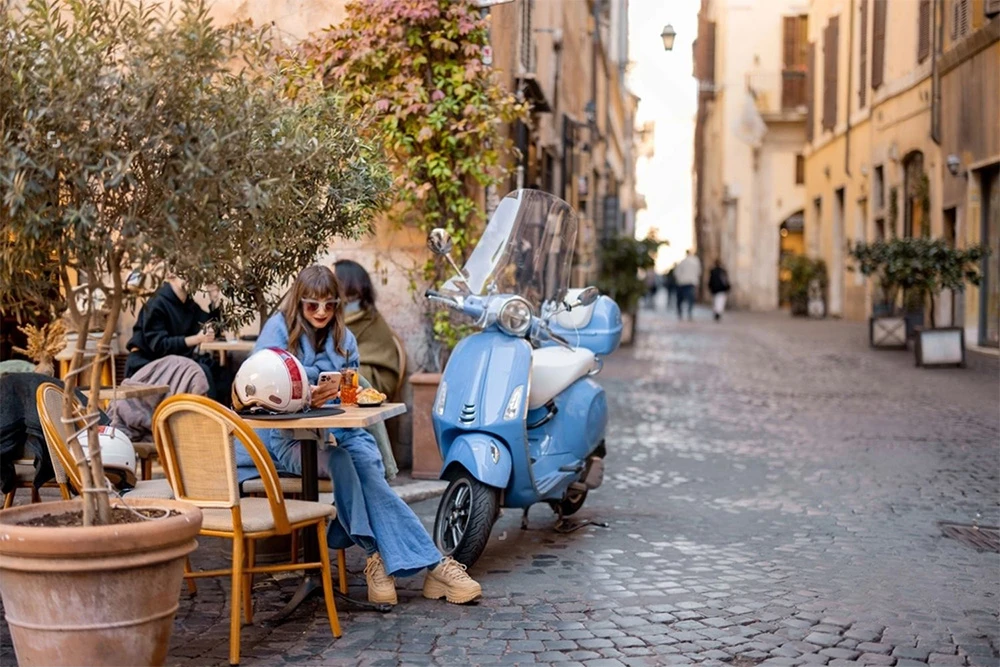
Final thought
Step beyond the grand arches and notice how hidden stories, small details, and human moments show a truer side of Rome. A barista’s shy smile, a scuff on a worn threshold, a pause between footsteps each is easy to miss and worth your time. It is like a mosaic, tiny pieces of ordinary life forming a gentle pattern when you look closely. Keep that attention with you, and let your next wander begin inspired.

